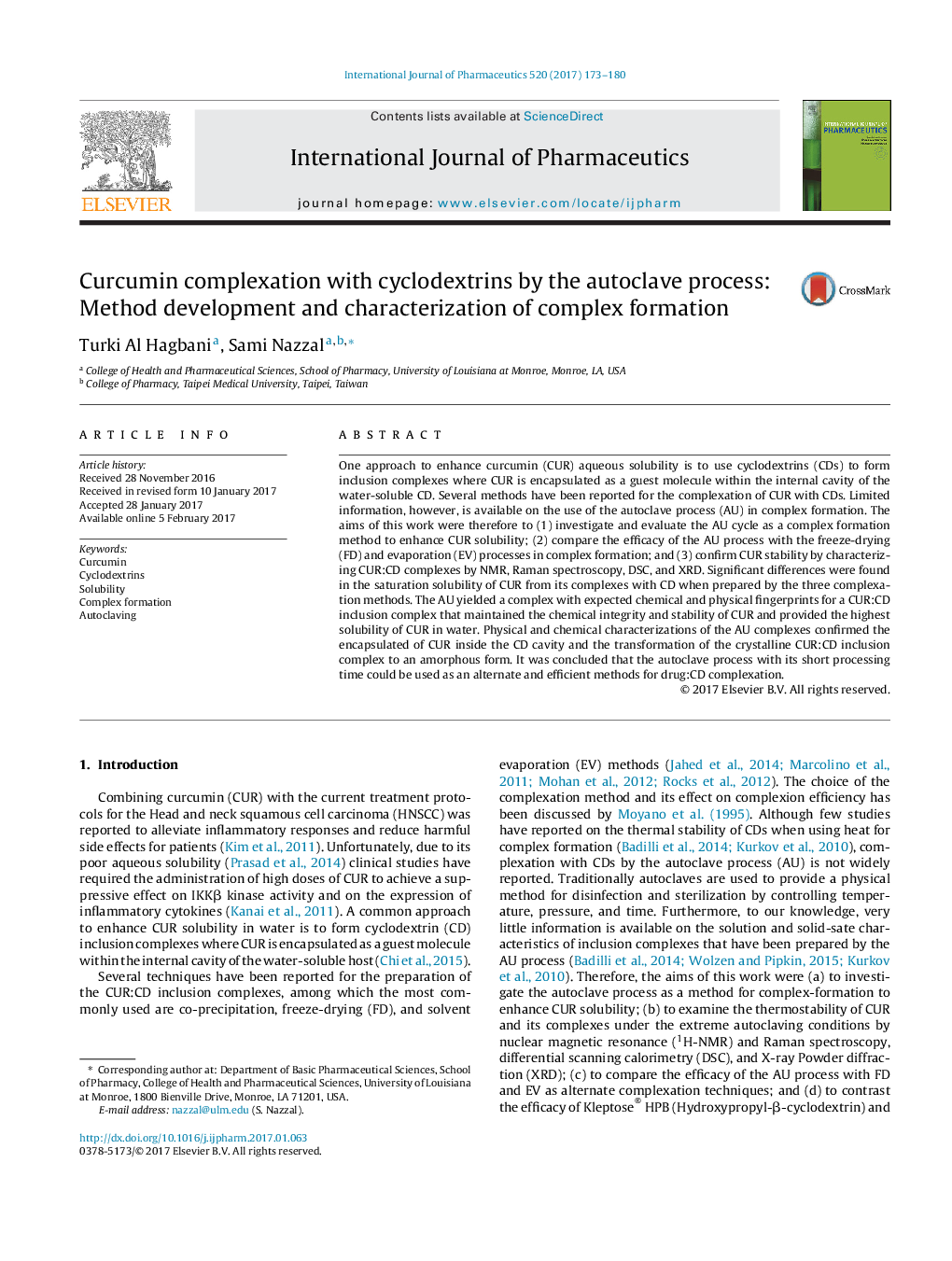| Article ID | Journal | Published Year | Pages | File Type |
|---|---|---|---|---|
| 5550405 | International Journal of Pharmaceutics | 2017 | 8 Pages |
One approach to enhance curcumin (CUR) aqueous solubility is to use cyclodextrins (CDs) to form inclusion complexes where CUR is encapsulated as a guest molecule within the internal cavity of the water-soluble CD. Several methods have been reported for the complexation of CUR with CDs. Limited information, however, is available on the use of the autoclave process (AU) in complex formation. The aims of this work were therefore to (1) investigate and evaluate the AU cycle as a complex formation method to enhance CUR solubility; (2) compare the efficacy of the AU process with the freeze-drying (FD) and evaporation (EV) processes in complex formation; and (3) confirm CUR stability by characterizing CUR:CD complexes by NMR, Raman spectroscopy, DSC, and XRD. Significant differences were found in the saturation solubility of CUR from its complexes with CD when prepared by the three complexation methods. The AU yielded a complex with expected chemical and physical fingerprints for a CUR:CD inclusion complex that maintained the chemical integrity and stability of CUR and provided the highest solubility of CUR in water. Physical and chemical characterizations of the AU complexes confirmed the encapsulated of CUR inside the CD cavity and the transformation of the crystalline CUR:CD inclusion complex to an amorphous form. It was concluded that the autoclave process with its short processing time could be used as an alternate and efficient methods for drug:CD complexation.
Graphical abstractDownload high-res image (128KB)Download full-size image
